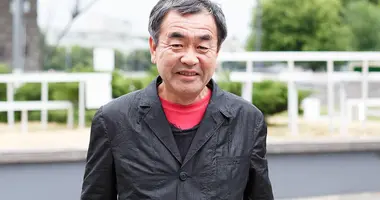The different types of roads in Japan
Before you get behind the wheel, learn more about the different types of roads in Japan.
Motorways and trunk roads
The motorways, Kosoku Doro "高速道路", or Jidoshado "自動車道", are signposted in green and are toll roads.
- For more information, see our article about motorways.
The trunk roads, or Kokudo "国道", are signposted in blue and are followed by a two or three-digit number. They are important roads, but do not have tolls, thus differentiating them from the motorways.
Other road categories
There are also intermediary categories, which are built to motorway standards but are trunk roads. They are called “trunk roads reserved for motorised vehicles” and can be identified with a round blue sign with a car on it.
These roads sometimes have tolls, and sometimes do not. They are often called “highways”, “drive ways”, “skylines”, etc. Their purpose is to connect important places.
Toll roads are also very common. They allow access to certain touristic or natural spots, and are tunnels or by-pass roads.
Large cities like Tokyo, Osaka or Nagoya often have urban motorways, or Toshi Kosokudoro “都市高速道路”. They are usually raised off the ground due to the lack of space and a fixed toll must be paid, meaning that the price will be the same regardless of the distance travelled. (However, the urban motorway networks of Tokyo and Osaka are planning to switch to a distance-based price.)
Famous roads
- Shutoko :
Who hasn’t dreamed of cruising along Tokyo’s raised urban motorway by night like a Manga character, going past buildings and over water? Beware though: the speed limit is actually 60km/h (a shame for lighting effects). The first part was built in 1962 and since, the network has not stopped growing, today reaching over 280 km.
- 246 :
The 246 trunk road, or "Ni-Yon-Roku" is one of the most well-known roads for the people of Tokyo. It goes from Nagatacho, through Shibuya, the district of Setagaya, continues side by side with the Tomei motorway through the Prefectures of Shizuoka and Kanagawa, to Hakone and Gotemba near Mount Fuji.
- Route 11 (ou Daiba Route) :
Route 11 is one of the roads of Tokyo’s urban motorway network, the Shutoko. It goes from Shibaura and ends at Ariake. It is this road that crosses the Rainbow Bridge.
The roads of tokyo
Most of the small streets in the capital have no name. Addresses are made up of the number of blocks.
The major streets do have names though. The network of main streets in Tokyo is made up of several circular roads of various sizes, and the geographical centre is the Imperial Palace.
These circular streets are numbered from 1 to 8, starting in the centre, but they also have names. “Uchibori Avenue” for number 1, “Sotobori Avenue” for number 2, “Meiji Avenue” for number 5, “Yamate Avenue” for number 6. This explains how you can be on Meiji Avenue or Yamate Avenue while being in different parts of Tokyo: they circle the city. Only numbers 7 and 8 have kept their original numbers and are called “Kan-nana” and “Kam-pachi”.










